Step 1: Research
Take your time and think it through. Gain the proper knowledge. Find some experienced brewers and contact them. Listen to their advice and try to get as much information as possible for the road ahead.
- learn through technical literature (books, magazines, etc.) and online content,
- take a brewing class,
- study some examples of good practice, arrange a visit to an already established craft brewery and observe the beer brewing process.
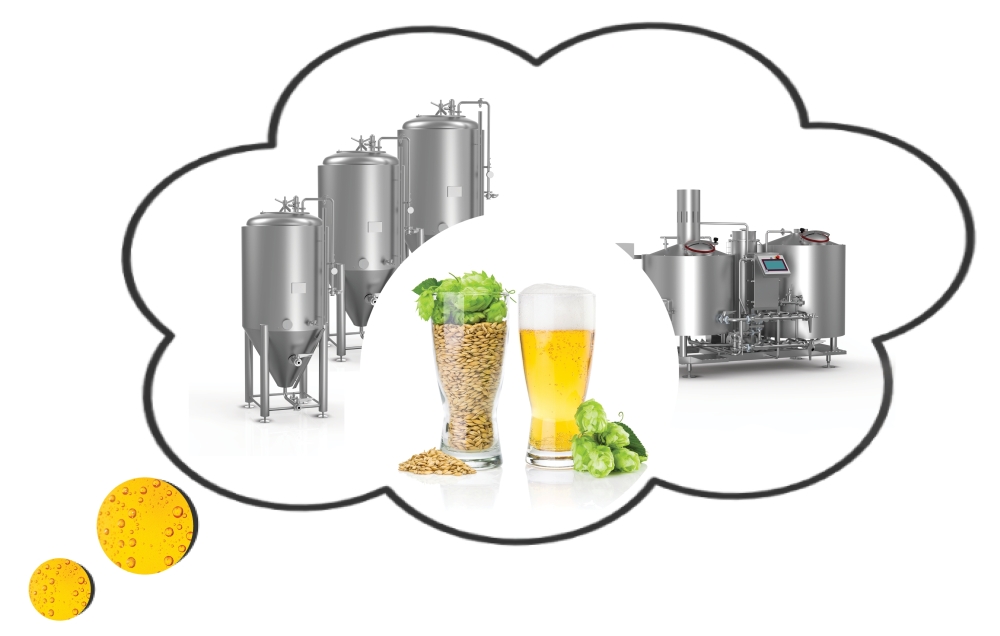
Step 2: Location
Before purchasing the premises for your brewery, consider the amount of beer you'd like to produce.
- Are you a beer lover who wants to make their own beer as a hobby?
- Do you want to establish your own craft brewery and take your hobby to the next level, making it profitable?
Once you've answered these questions, you'll have the information needed to start finding the right place. The place where your future brewery will be located must meet all food industry requirements. You will also have to bear in mind all local, national, and international beer production regulations, applicable where your brewery will be installed.
Choosing the right place is definitely very important. Later on, a well-thought-out brewery design can save you a lot of time, physical work, and additional expenses.
If you plan to sell your beer and maybe have your own tap room, keep in mind that you will probably have to gradually expand your business. This will require bigger capacities, more tanks, more space. That is why it is better to design and arrange the place accordingly already in the initial phase so that when the time comes, the only thing you have to do is add fermenters and maturation tanks.
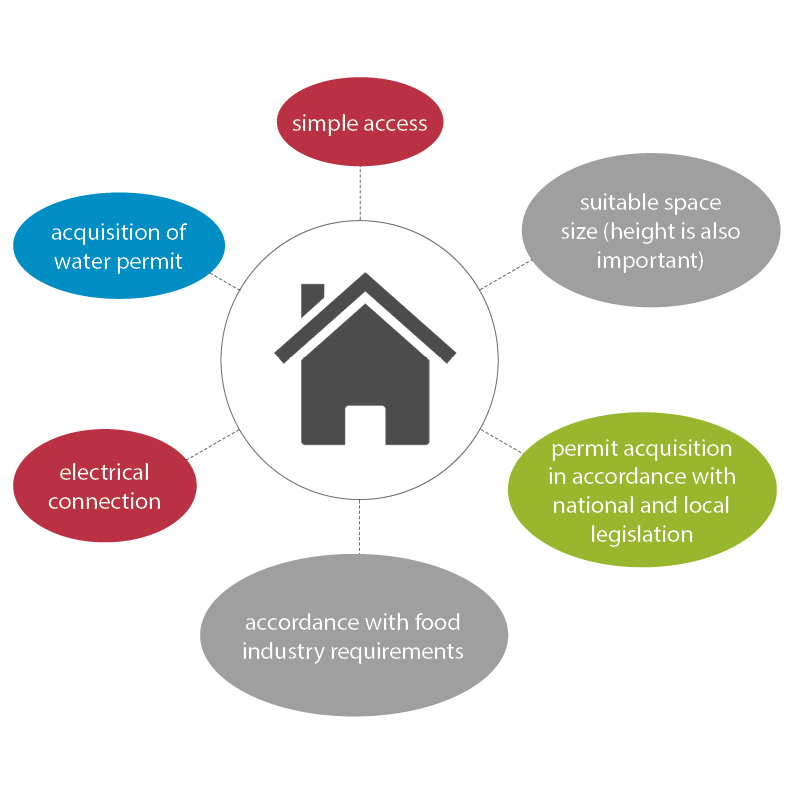
What should you pay special attention to when choosing and preparing the brewery location?
- size: the place must be big enough (not only the surface area, but also the height),
- simple access: it is advisable to limit your work area to one floor, without stairs or other height obstacles, to have big enough doors and an access for delivery purposes, and to enable forklift maneuvering,
- legal requirements: obtain all applicable and required permits (property change of use, food business registration, water permit acquisition, electrical connection),
- hygiene standard: hygiene maintenance is vital for the brewery - the premises must be designed in such a way to make cleaning easy (smooth and washable floor surface, suitable drain channels and steam outlet from the room).
Step 3: Equipment
Setting up your own brewery can be a very demanding venture from an investment point of view, which is why it is even more important to have a clear idea, as well as a well-developed plan and goals right from the start.
- How much are you willing to invest?
- How much beer do you want to produce?
If possible, visit a beer brewing equipment manufacturer. Study their equipment and find out which combinations of brewhouses, tanks, and other equipment would suit your current and possible future needs.
What do you need to start your own craft brewery?
- malt mill,
- brewhouse,
- suitable number of fermentation and maturation tanks,
- water preparation and storage tanks (separate for hot and cold water),
- chiller,
- steam generator,
- pump,
- flexible piping: for pumping the product into the fermentors, for water pumping,
- keg and bottle filling equipment,
- packaging: bottles, cans, kegs,
- labels for bottles and other packaging (original label designs can help boost your sales and make your beer easily recognizable, but they do have to contain all required beer information, including the expiration date).
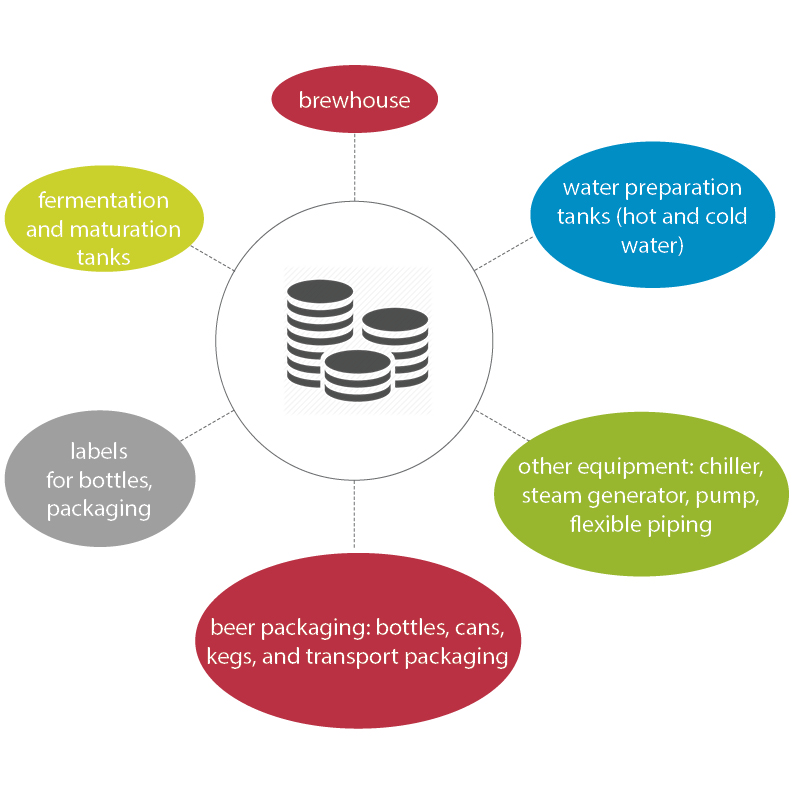
Step 4: Raw materials
The main ingredients of beer are barley malt, hops, yeast, and, of course, water.
Water
Before use, we advise you to test the quality and discover the characteristics of the water you plan to use. A water analysis report can usually be obtained from the local authorities. Sometimes the only way to provide suitable water is to use cleaning devices or filters.
The pH value is also important and it must be occasionally checked during the brewing process, especially in the mashing phase. A suitable pH value has a beneficial effect on enzyme activity, beer color and taste, as well as prolong the beer's shelf life.

Malt
The malt affects the aroma, taste, color, and final texture of the beer.
Before use, the grains must be milled. During this process, it is important that the grains only burst and are not completely crushed. This way, the starch in the center of the grain is revealed, while the bran remains undamaged.
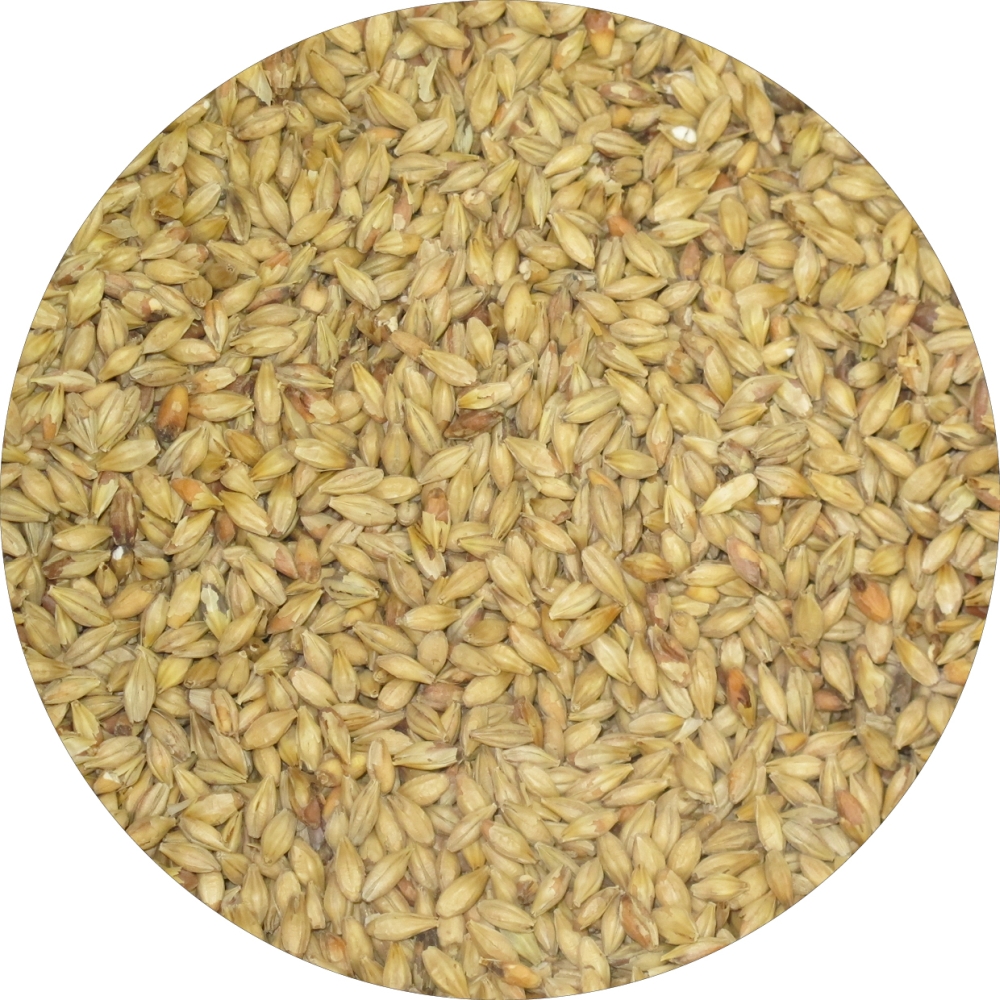
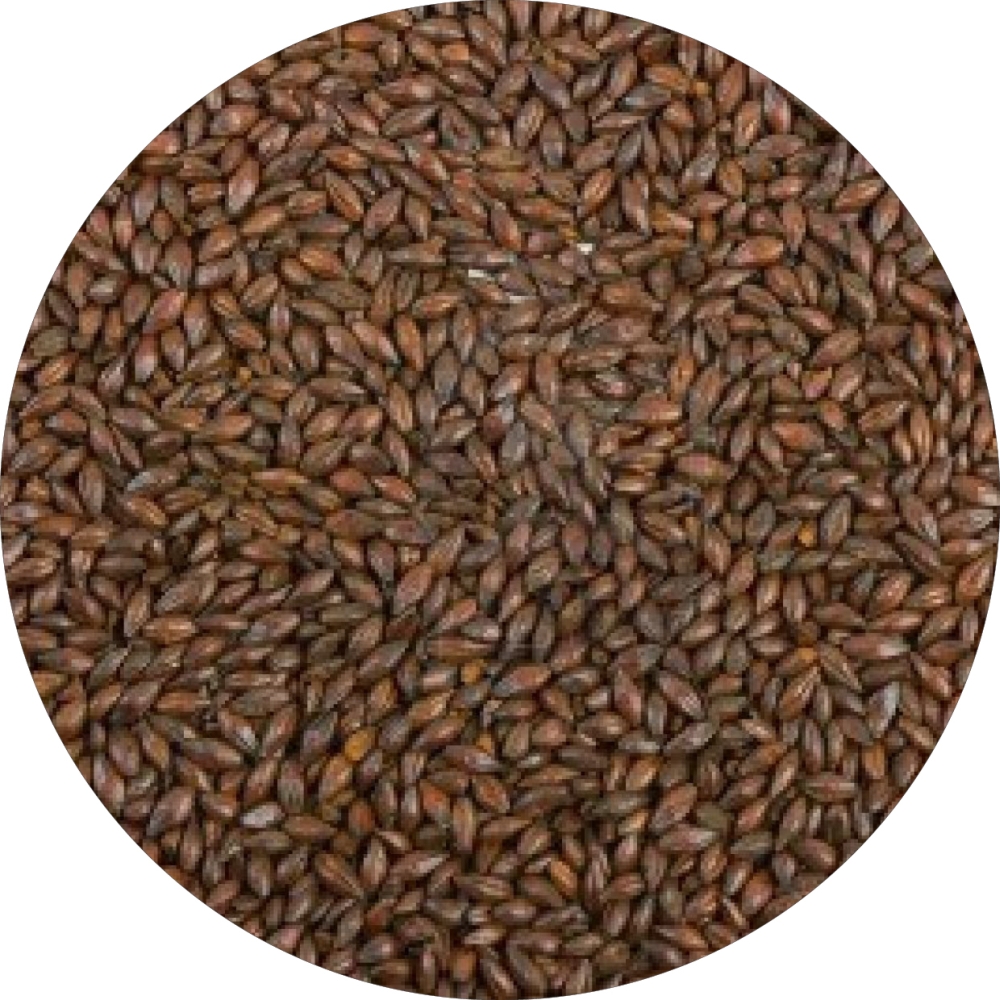
Hops
Choosing the right hop variety, the right amount to use, and its addition in different phases of the brewing process have a significant effect on the aroma, taste, and bitterness of the beer.

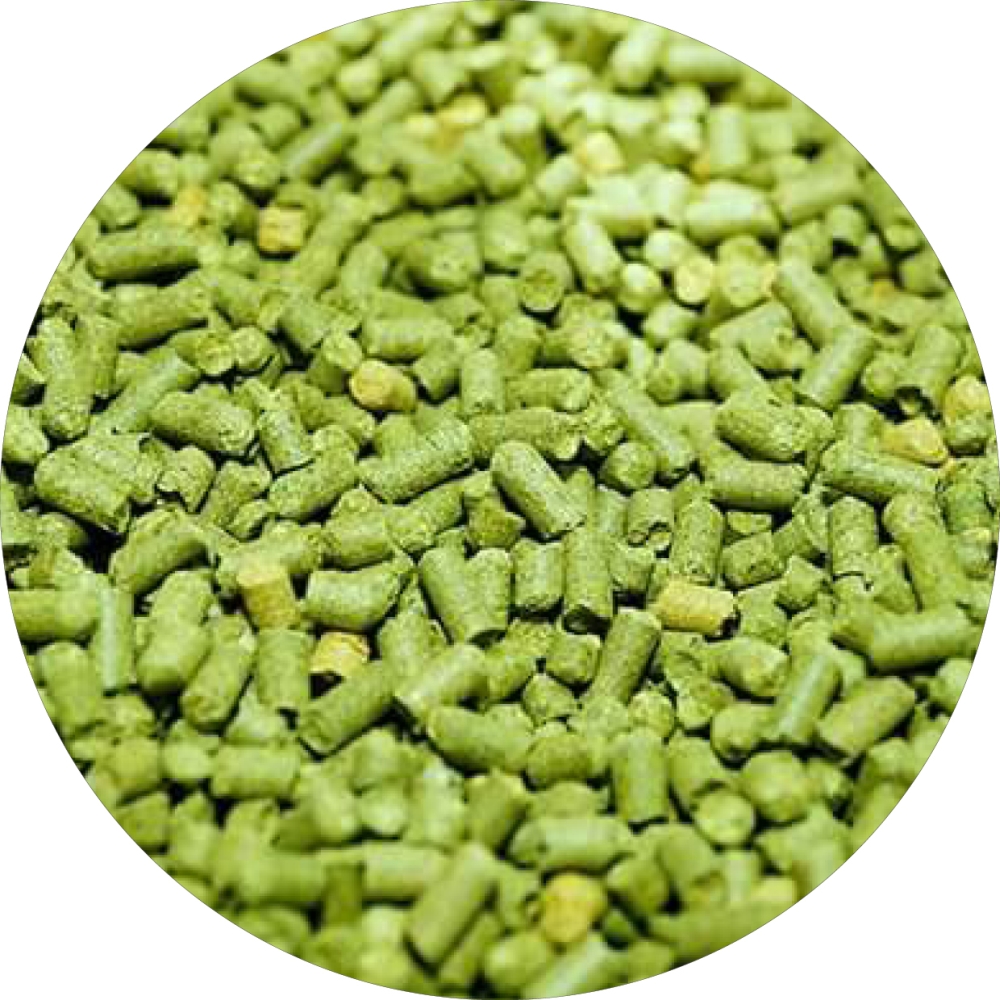
Yeast
Yeast is an organic substance that contains one or more types of fungal yeast. Yeast is responsible for beer fermentation: it metabolises the sugars, extracted from the malt, and turns them into alcohol and carbon dioxide. In addition, yeast strongly affects the taste and general aroma of the beer.
There are two types of fungal yeasts used in beer brewing. Based on the fermentation type, they can be divided into two groups:
- top fermenting yeasts, which ferment at higher temperatures and float to the top of the fermenter during this process,
- bottom fermenting yeasts, which are nowadays used by most breweries, start fermenting at lower temperatures; these yeasts ferment more slowly and settle down at the bottom of the fermenter during this process.
Beer yeast is available in two forms:
- dry (dehydrated) yeast
- liquid yeast

Step 5: Brewing and recipes
Once the documentation and premises are ready, the equipment installed, and all the necessary raw materials are safely stored, you can start the more creative and fun part of this business - beer brewing.
Of course, one does not become a master brewer overnight. Beer brewing requires a lot of knowledge, experience, and creativity. We advise you to start learning from the experts - experienced brewers. Numerous tips and recipes can be found online and in professional literature.
Start with something easy, an already tested recipe. Once you gain more experience and confidence, you can start adding new flavors and creating your own beer. Write down your recipes, technological procedures, measurements, and important observations. Always evaluate your recipes, taking into account also the feedback you get for each beer. This information will later on help you find the best combinations for your recipes.
The beauty of making craft beer is in the fact that it always offers something new, a different combination of ingredients, new flavors, creative and innovative solutions, as well as a continuous flow of new challenges.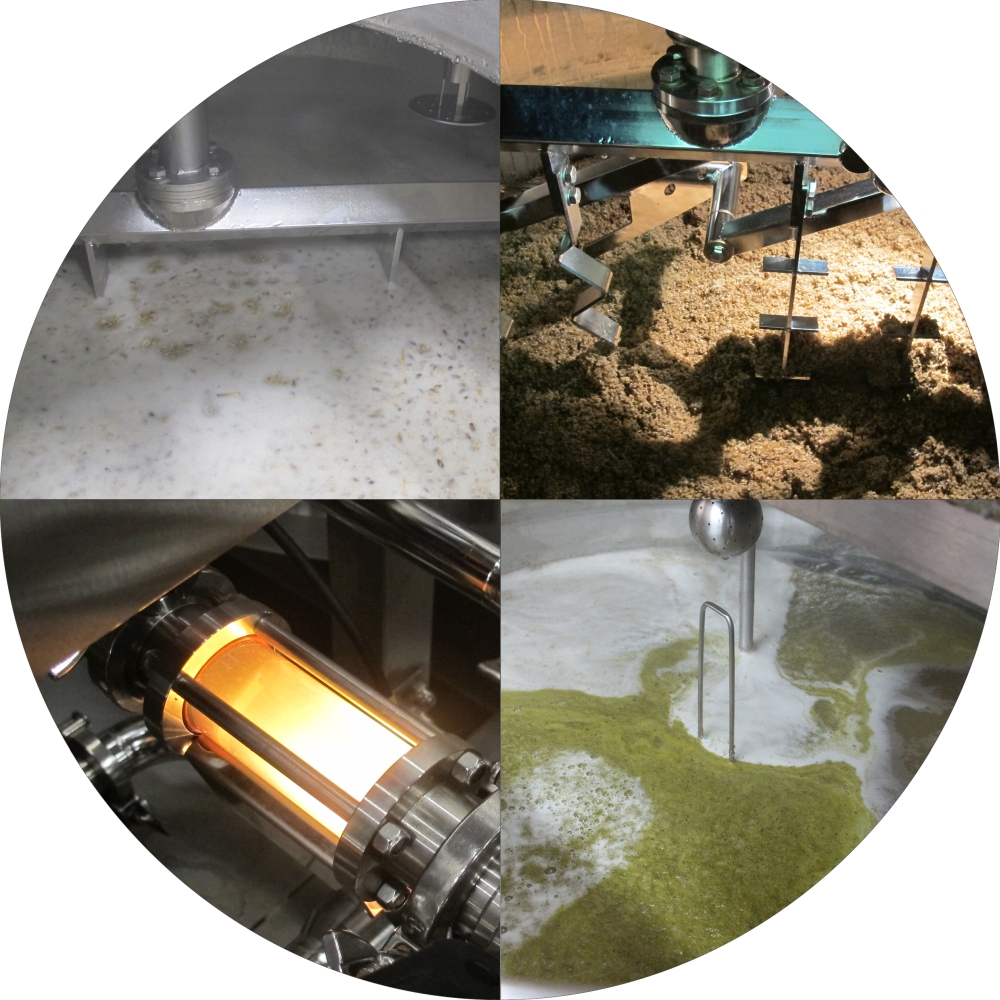
Step 6: Your own brand
You need to make sure your brewery is recognizable. You need a name for your brewery, a logo, and packaging labels. You can present your products on a website, or spread the word on social media.
If you feel you lack creativity, we advise you to hire a graphic designer that will help you establish the corporate identity of your brewery.

»Be creative to get noticed.«
This is all just basic advice and guidance to enter the beer brewing world. You will be able to find a more detailed description of the brewing process, equipment, raw materials, and regulations on the internet or in technical literature.
We advise you to start gradually. Create some capital and a reliable sales network. Make sure your brewery is recognizable. Once all these factors show increasing and constant progress and growth, it may be time to increase your production capacity.
We advise you to also look at:
Slovenian Institute of Hop Research and Brewing
Brewer`s Friend
